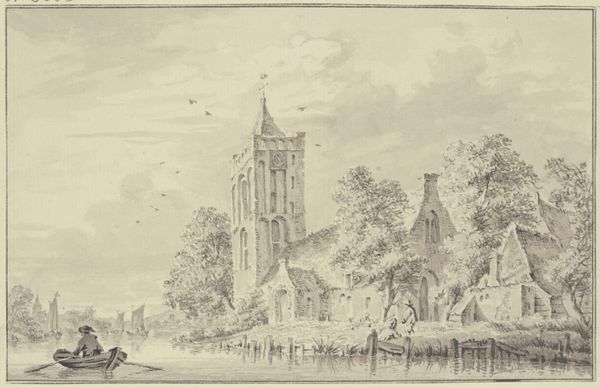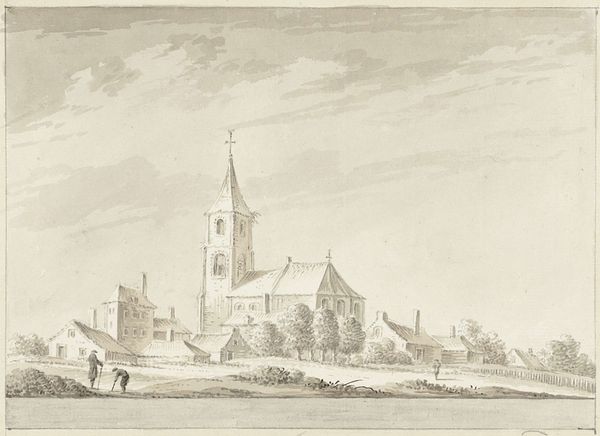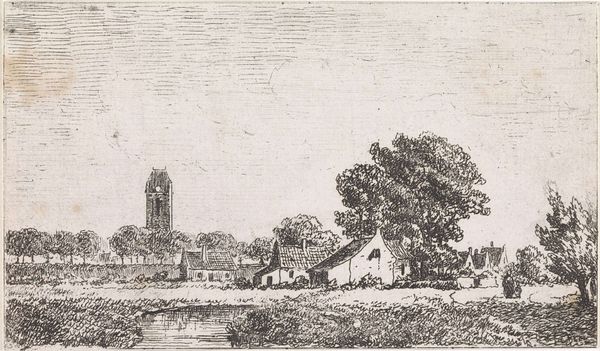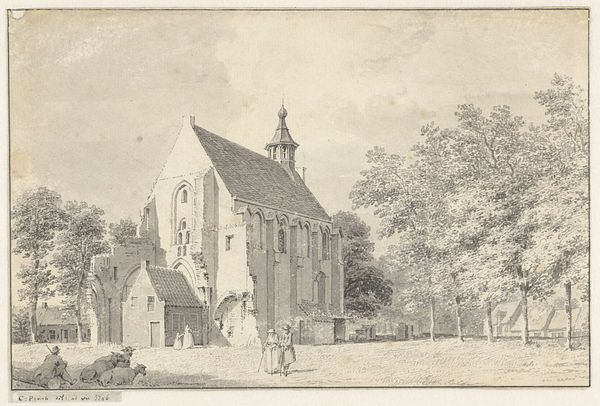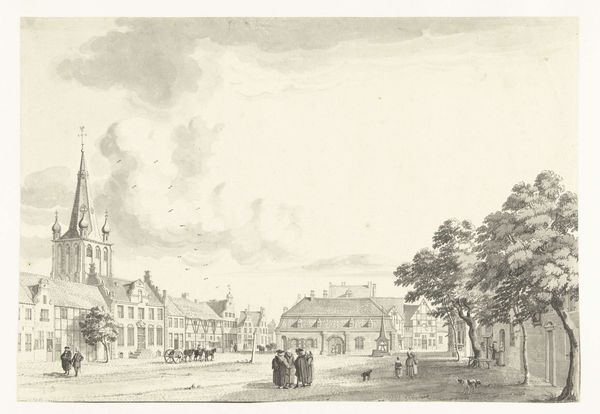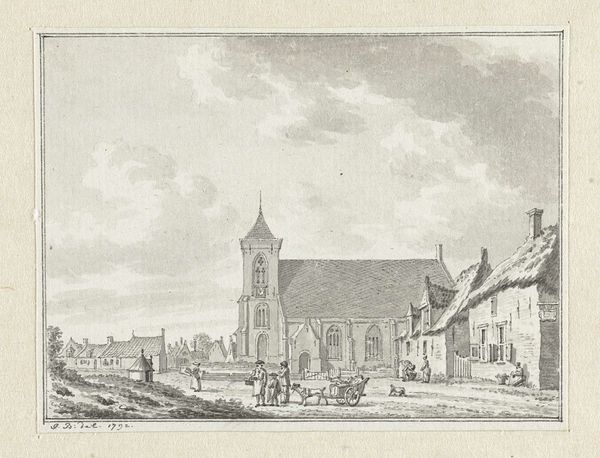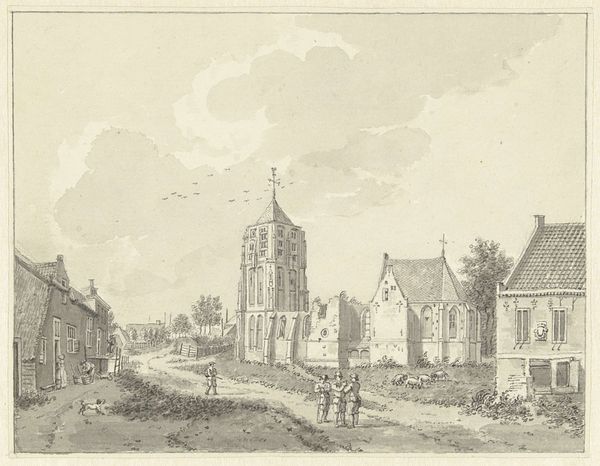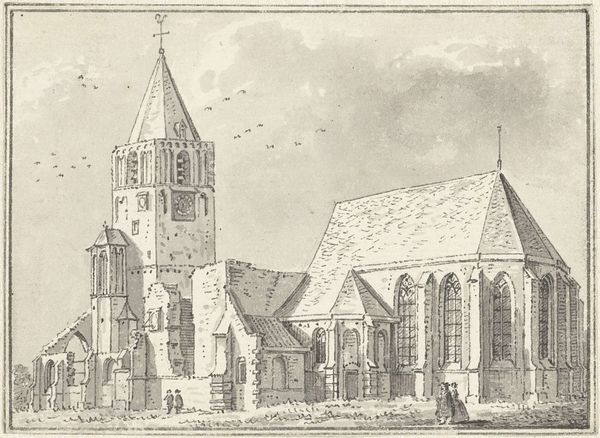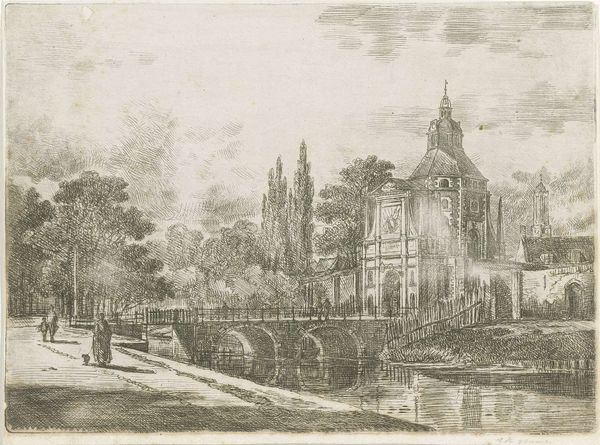
drawing, ink, pen
#
drawing
#
baroque
#
pen sketch
#
landscape
#
ink
#
pen
#
cityscape
#
realism
Dimensions: height 79 mm, width 107 mm
Copyright: Rijks Museum: Open Domain
Curator: There's a quiet charm to this pen and ink drawing, wouldn't you agree? It feels very grounded, somehow. Editor: It does possess a certain peacefulness. We are looking at "De kerk te Westbroek" by Jan de Beijer, dating back to 1749. It presents a landscape featuring a church, complete with the surrounding townspeople going about their lives. It feels idyllic, but I’m also curious about what the church represents within its social framework. Curator: It’s beautifully rendered, particularly the way De Beijer captures the texture of the trees and the architectural detail of the church itself with such simple strokes. It feels realistic, even by today's standards. One can observe that his command of pen and ink results in very convincing portrayal of shadows, providing structure and solidity to all of the objects. Editor: Right, realism was taking hold as a vital artistic force. This was happening across Europe with landscape painting, in particular becoming an important genre. Churches such as the one rendered here were symbols of permanence, power, and religious authority, influencing the daily lives and moral structures of their congregations. Curator: Absolutely. And it seems De Beijer consciously juxtaposes the enduring nature of the church with the ephemeral moments of everyday life – people fishing, a dog playing. Editor: And who had access to such images? Were they commissioned by the church itself? Were these works intended for a specific demographic that would appreciate and consume this particular representation of the Dutch landscape and its values? Curator: That's a question art historians often grapple with. Considering this is now housed in the Rijksmuseum, its journey reflects shifting cultural values, too. The act of collecting and displaying inherently assigns value and shapes interpretation. Editor: Which calls on me to think about its place today. Can such serene images confront the viewer? Does a picturesque scene always speak of harmony, or could it mask tensions inherent in the religious and social constructs of the period? Curator: A fair question. Perhaps its simplicity and calm also allows the viewer to pause, and to look back. Editor: It reminds us to approach historical artwork not just as objects of beauty, but as artifacts loaded with historical and societal significance, continually inviting conversations with the present.
Comments
No comments
Be the first to comment and join the conversation on the ultimate creative platform.
